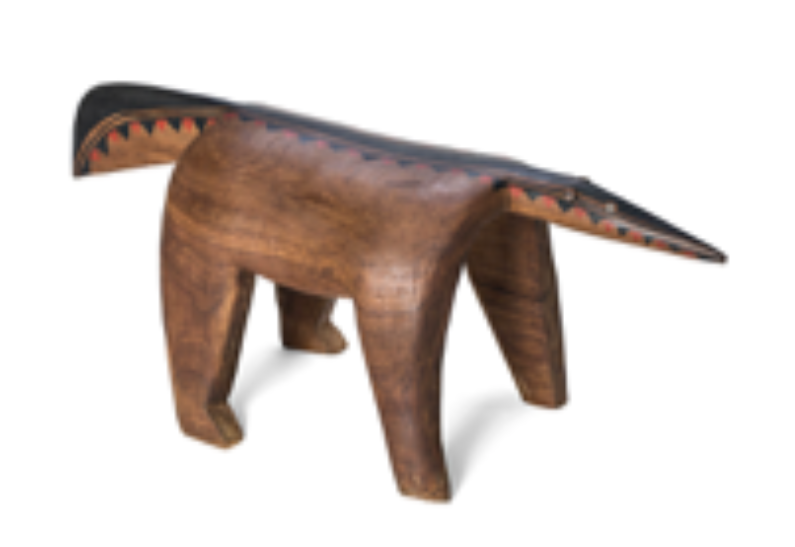Click here to view the exhibition in English.
Click here to view the exhibition in Portuguese.
Carving wooden sitting benches is a longstanding artistic practice among the Indigenous peoples in Brazil. These wooden benches are utilized for ceremonial purposes and everyday use in their communities. Some are zoomorphic, representing animals of the Brazilian fauna and spiritual entities, while others take a more geometrical seat shape, painted with natural pigments or carved in eloquent designs.
This exhibit showcases 118 contemporary benches drawn from the collection of Coleção BEĨ in São Paulo, Brazil, and features the work of artists from thirty-four Indigenous groups across different regions of the country. In order to center and amplify Indigenous perspectives and put them in conversation with one another, we have created a geospatial map locating each artwork in the place of its creation.
Our journey exploring this beautiful sculptural art form takes us to different communities and highlights the relationships between benches, the experiences of the artists who make them, and the natural and cultural worlds they reflect. Curated in dialogue with several of the artists whose work is shown here, we emphasize conceptual representations of space, place, and belonging they have shared with us. You may choose to take the guided tour or you may explore the map on your own, but either way, let curiosity and the voices of Indigenous artists guide your exploration.
A collaboration between The Fralin Museum of Art and Coleção BEĨ in São Paulo, Brazil. Curated by Mariana Brazão, independent curator (UVA 2019); Marina Frúgoli, curator, Coleção BEĨ; and Adriana Greci Green, curator of Indigenous arts of the Americas, The Fralin Museum of Art. Developed with support from Mapping Indigenous Worlds Lab, University of Virginia; Scholar’s Lab, University of Virginia; Mellon Indigenous Arts Initiative, University of Virginia; The Americas Center / Centro de Las Américas, University of Virginia; and with assistance of ISA – Istituto Socioambiental.
